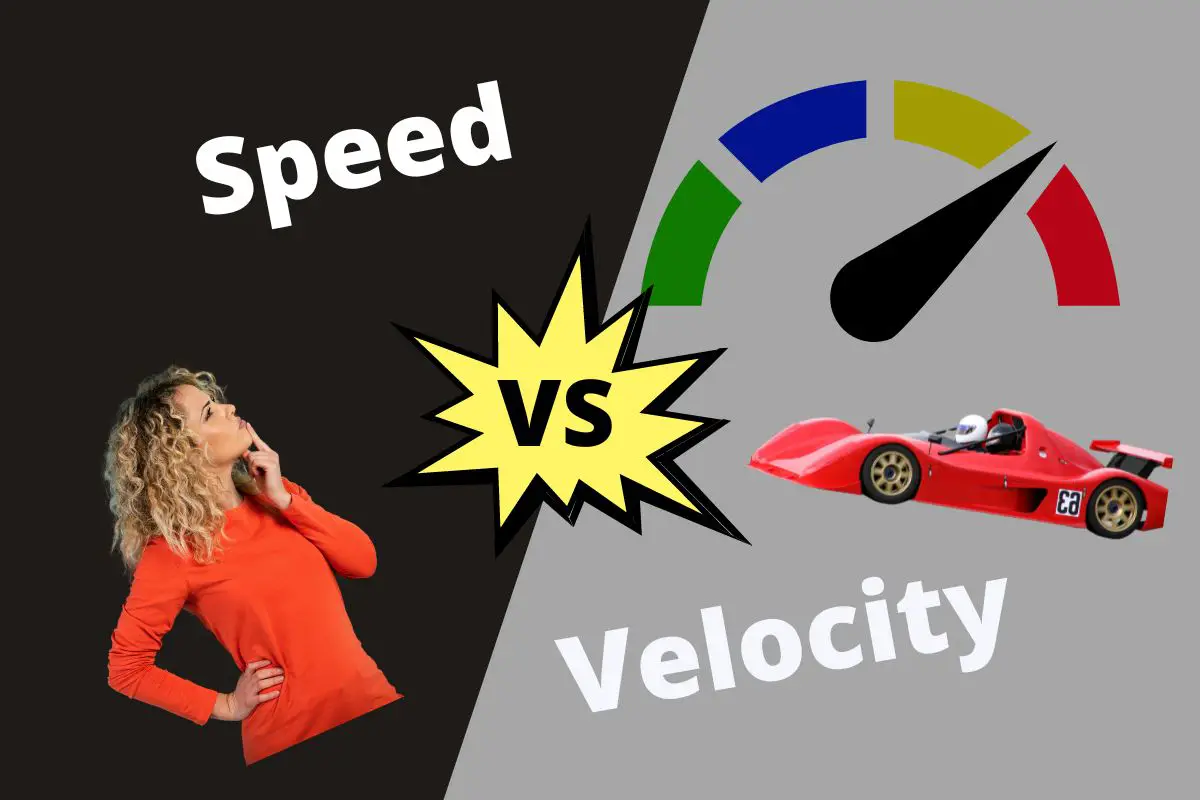Speed is the rate of change of motion of an object, irrespective of its direction. Velocity, however, is the rate of change of motion of an object with respect to its direction.
It’s easy to confuse the terms speed and velocity in your schoolwork or everyday life. While they’re often used interchangeably, these two words have different meanings.
Table of Contents
What is Speed?
Speed refers to how fast an object moves. In your science book, you’ll see it defined as the magnitude of the velocity of an object, one of Newton’s Laws.
Speed can also be defined as the rate at which an object covers a particular distance. While a fast-moving object with high speed covers more distance in less time, a slow-moving object with a low speed covers less distance in the same amount of time.
Speedometers are instruments that measure speed.
Speed is a scalar quantity, meaning that it only has magnitude and not a specific direction. It’s often expressed in meters per second (m/sec). In the United States, speed limits are expressed in miles per hour.

This speedometer shows how much distance a vehicle covers in a certain time, such as miles per hour.
Formula for Speed
Speed is the ratio of distance covered to the time taken.
Speed = d/t
Where:
- d is the distance traveled in m.
- t is the time taken in sec.
What is Velocity?
Velocity is defined as the distance covered by an object in a unit of time. You might also see it described as the displacement of an object in unit time.
Unlike speed, velocity is a vector quantity which means it has both magnitude and a specific direction.
Velocity is expressed in meters per second (m/sec).

Formula of Velocity
Since velocity is the ratio of displacement transverse to the time taken, the formula of the velocity is:
Velocity = d/t
Where:
- d is the displacement transversed in m.
- t is the time taken in sec.
Since velocity revolves around the change of displacement, it has another formula that looks like:
Velocity = Δx/t
Where:
- Δx is the change in displacement in m.
- t is the time taken for the displacement in sec.
What is the Difference Between Speed and Velocity?
| Speed | vs | Velocity |
| Speed refers to how fast an object is moving | Meaning | Velocity refers to the direction of the movement of the body |
| Scalar quantity | Type of Quantity | Vector quantity |
| The rapidity of the object | Prime Indicator Of | Position as well as the rapidity |
| It can never be zero | Value | It can be zero |
| It never decreases with time | Change With Time | It can also decrease with time |
Definition
Speed refers to how fast an object moves without taking its direction into account, and velocity refers to the direction of an object’s movement.
Type of Measurement
Speed is a scalar quantity (only magnitude), and velocity is a vector quantity (both magnitude and direction.)
Value
Speed can never be zero, as distance can’t be zero, but velocity can be zero.
Indicates
Speed is an indicator of the rapidity of the object, and velocity is the prime indicator of the object’s position and rapidity.
Change Over Time
Speed never decreases with time, whereas velocity can decrease with time.
Different Types of Speed
There are mainly four types of speed.
Uniform speed
When an object covers equal distance in equal time intervals, it’s defined as a uniform speed.
Variable speed
When an object covers a different distance at equal intervals of time, it’s defined as variable speed.
Average speed
Average speed is the ratio of the total distance traveled to the total time taken by the object.
Instantaneous speed
When an object is moving at a variable speed, then the speed of that object at any instant of time is known as instantaneous speed.
Different Types of Velocity
There are mainly four types of velocity.
Uniform Velocity
If an object covers equal displacements in equal time intervals, the velocity remains constant throughout the motion. It is thus said to be in uniform velocity.
Variable or Non-uniform Velocity
If the speed or direction of a body both change with time, it is said to be in variable velocity.
Average Velocity
The ratio of total displacement to the total time interval is called average velocity.
Instantaneous velocity
The velocity of an object at a particular instant of time is called its instantaneous velocity.
If you enjoyed this post, check out our other science comparisons, like solute versus solvent.

